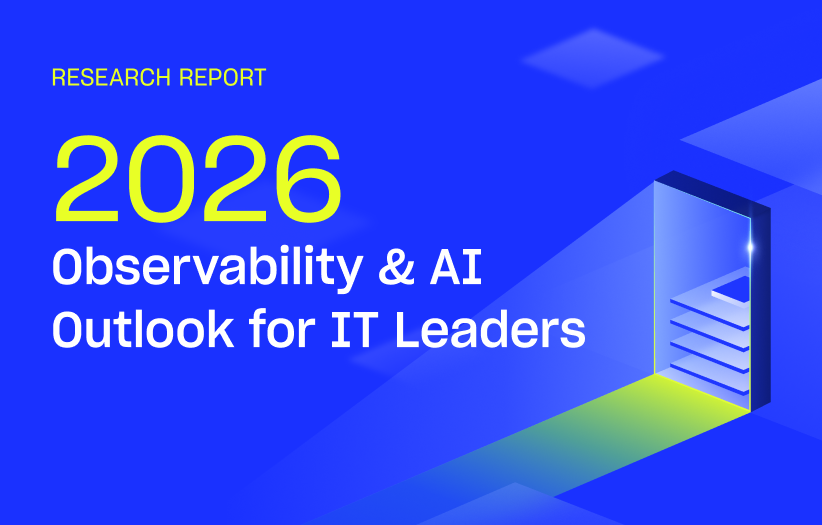One View, Smarter ITOps: The LogicMonitor + ServiceNow Integration

LogicMonitor + Catchpoint: Enter the New Era of Autonomous IT

Proactively manage modern hybrid environments with predictive insights, intelligent automation, and full-stack observability.
Explore solutionsExplore our resource library for IT pros. Get expert guides, observability strategies, and real-world insights to power smarter, AI-driven operations.
Explore resources
Our observability platform proactively delivers the insights and automation CIOs need to accelerate innovation.
About LogicMonitor
Get the latest blogs, whitepapers, eGuides, and more straight into your inbox.
Your video will begin shortly
Modern ITOps leaders face rising pressure to resolve incidents faster, reduce manual toil, and meet ever-tighter SLAs. But too often, ITOps leaders are juggling numerous disconnected tools, each providing only a narrow slice of the operational picture.
LogicMonitor and ServiceNow are tackling this challenge with a unified view of observability and workflows. Together, we bring AI agents into ITOps—Edwin AI on the observability side, Now Assist on the workflow side—designed to exchange information and drive action. Metrics, events, logs, and traces flow in from LogicMonitor; ServiceNow turns that context into tickets, tasks, or fully automated fixes.
The result is agentic AIOps in production: AI that links observability with service workflows to accelerate response and reduce manual effort.
In this blog, we will:
There are four key gaps that the LogicMonitor + ServiceNow integration addresses. ServiceNow’s workflows move tickets from “open” to “done,” but they don’t always bring along the data that explains why the ticket exists. LogicMonitor supplies that missing context and adds a layer of AI tuned for operations. The result is a stack that covers four common pain points:
Now let’s take a quick look at the primary links between LogicMonitor and ServiceNow, and how those links make everyday ops work smoother.
We’ve built a true agentic collaboration between LogicMonitor’s Edwin AI and ServiceNow’s Now Assist. These AI agents operate with increasing autonomy, actively making decisions rather than merely passing information between platforms.
When LogicMonitor detects an anomaly, Edwin AI analyzes patterns, determines significance, and makes contextual decisions. Edwin autonomously evaluates the probable root cause, maps affected services, calculates the blast radius, and independently decides what information package would most effectively drive resolution. On its own, Edwin AI functions as a virtual team member, performing the initial incident triage that would typically require frustrating manual work.
This intelligence payload then flows directly into ServiceNow, where Now Assist acts as the receiving agent. Now Assist actively processes the incoming context, makes workflow decisions, assigns appropriate priority levels, and initiates remediation steps. The system continuously learns from each incident’s resolution path, strengthening its decision-making capabilities over time.
Currently, this agent-to-agent communication operates primarily in one direction (LogicMonitor → ServiceNow), but we’re advancing toward full bidirectional communication between agents. This evolution will enable these AI agents to negotiate solutions between themselves, propose and execute remediation steps, and close the feedback loop without human intervention for routine incidents.
For ITOps teams, this collaboration represents a fundamental shift from tools that simply assist humans to intelligent agents that can handle entire workflows independently. Today, teams gain unified incident management and context without screen-switching. The long-term goal: intelligent agents that resolve routine issues end-to-end.
A configuration database can’t guide anyone if it’s out of date. LogicMonitor keeps ServiceNow’s CMDB fresh by running continuous discovery and mapping of how every device, service, and application connects. Edwin AI builds a live knowledge graph from that scan and streams the details—new assets, changed settings, upstream and downstream links—straight into ServiceNow. No scripts, no nightly imports, no cleanup spreadsheets.
When a ticket lands, the incident already carries the map dependencies. Operators see which systems are at risk, trace the fault to its source, and avoid fixes that break something else. A current CMDB turns into a practical tool rather than a shelf document.
LogicMonitor’s data also flows into ServiceNow’s Customer Service Management workspace. When a user opens a ticket, the system already knows the affected device, recent alerts, and past fixes. That context trims the questions support agents need to ask and points them toward a likely solution faster.
Each resolved case feeds an AI feedback loop, so suggested responses and knowledge-base articles get a little sharper next time around. The result is fewer back-and-forth emails, quicker close times, and a smoother experience for the person who reported the issue.
AI isn’t an add-on in this setup; it ties together each part of incident handling—from the initial alert to the post-incident review. Edwin AI supplies the data, ServiceNow carries out the workflows, and together they surface the insight teams need right when they have to act.
The table below shows how integrated AI supports each phase of the incident lifecycle:
| Lifecycle Stage | What the Integrated AI Does | Why ITOps Cares |
| Alert Deduplication & Correlation | Complete event intelligence. Collapses duplicate alarms and stitches related events across apps, infra, and cloud tiers. | Cuts noise by 80%+, letting engineers see patterns instead of pings. |
| Incident Diagnosis & Impact Analysis (Blast Radius) | Maps fault domains and downstream dependencies in real time. | Instantly answers “Who’s affected?” so the right war room gets paged, avoiding over-mobilization. |
| Incident Triage & Prioritization (Auto-Triage) | Auto-classifies incidents by severity, business impact, and SLA risk. | High-stakes issues jump the queue; low-impact blips wait their turn. |
| Incident Resolution & Suggested Remediation | Mines historical fixes and live telemetry to recommend next steps—scripts, rollbacks, config changes. | Shrinks mean-time-to-resolve from hours to minutes; tribal knowledge becomes shared knowledge. |
| Root Cause & Change Impact Analysis | Correlates config changes, deploys, and minimizes infra drift with failure signatures. | Stops symptom chasing and nails the true culprit—crucial for audit and continuous improvement. |
| Incident Avoidance | Learns from past incidents to predict and pre-empt future ones (capacity spikes, config drift, anomaly trends). | Moves the org from firefighting to fireproofing, driving down both risk and cost. |
Bottom line: With AI guiding every phase of the incident lifecycle, operations shift from reactive scramble to proactive control. Fewer false alarms, faster fixes, and smarter prevention add up to a more resilient and cost-efficient IT landscape—exactly what modern enterprises need to keep the business running.
The LogicMonitor Edwin AI LMDX App is available now in the ServiceNow Store. It’s fully certified and deployable directly from the catalog—no custom code or workaround integrations required.
Data already moves in both directions. Incidents, changes, CMDB items, and knowledge articles sync freely between platforms. LogicMonitor pulls in ServiceNow events, adds MELT-level detail, and writes the enriched record back in real time. Teams work from a single, continuously updated thread.If improving IT operations speed and clarity is a 2025 priority, reach out to our team to learn more. The LogicMonitor and ServiceNow integration is already delivering on that goal.
© LogicMonitor 2026 | All rights reserved. | All trademarks, trade names, service marks, and logos referenced herein belong to their respective companies.
